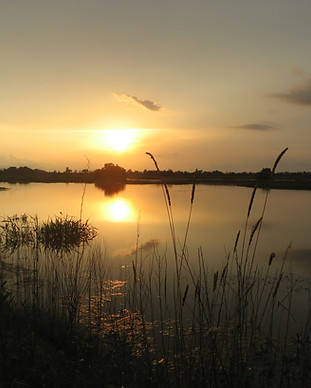Our natural world provides innumerable benefits to human health and economic prosperity. As wildlife and their habitats disappear, these benefits are compromised.
Although this is not a comprehensive list of nature's benefits, scroll down for a few examples below of how wildlife and wildlife habitat contribute to a strong Texas economy, jobs, human livelihoods, and well-being.
Download our Recovering America's Wildlife Act & the Economy graphic.
Outdoor Recreation
Our booming outdoor recreation economy relies on healthy fish and wildlife populations. In Texas, this economy generates close to 300,000 jobs, $14.1 billion in salaries and wages, and $31 billion in Total Value Added.
The Recovering America's Wildlife Act has the potential to create between 23,800 and 33,600 jobs, while adding $3.36 billion of national economic output. All of this would lead to a net positive gain of $1.96 billion annually to the GDP.

Nature Tourism
People travel from all over the world to see the iconic landscapes of Texas and catch a glimpse of our unique wildlife.
We have 4.4 million wildlife watchers in Texas. Wildlife watching amounts to $1.82 billion in retail sales and supports 146,000 jobs.
Photos: TPWD

Birding
Texas is located in the middle of the migratory central flyway and is a world-class birding destination.
We have an estimated 45 million bird watchers in the United States.
Birders spend nearly $41 billion annually on trips and equipment.

Angling
Texas' coast and waterways are an anglers paradise.
We have 2.2 million anglers in Texas. Their spending amounts to $2.01 billion in retail sales and contributes to 29,800 jobs.
This industry relies on healthy fish populations and aquatic ecosystems.
Wildlife Services
TPWD
TPWD
TPWD
TPWD

Pollination
One-third of our global food supply relies on services provided by pollinators.
Native wild pollinators alone are estimated to provide more than a
$9 billion dollar/year service to US agriculture. They help give us foods like watermelon, apple and pumpkin.
Photo: Rachel Rommel

Pest Control
Wildlife eat tons of insects, like mosquitoes and crop pests.
Bats alone are estimated to provide a $1.4 billion dollar service to Texas farmers. These services include reduced crop loss to pest insects, reduced spread of crop diseases, and reduced need for pesticide application.
Photo: TPWD, Nyta Brown

Water Quality
Fish & wildlife are part of systems that provide clean water, healthy rivers, bays and estuaries.
For example, we have over 50 species of freshwater mussels in Texas that help filter water, stabilize river bottoms, and provide food to fish and other wildlife.
Photo: Joel Deluxe, Wikimedia Commons
Wildlife Habitat Benefits
TPWD
TPWD
TPWD

Flood Control
Natural areas help make our coasts and cities more resilient to increasingly intense storms and flood events, saving us billions of dollars.
Wildlife habitat, like grasslands and wetlands, are "nature's sponge." They have immense water holding capacity, and help to slow flood waters.
Photo: Jaime Gonzalez

Carbon Sequestration
Texas forests and grasslands are nature's carbon capture technology.
For example, take our native grasslands which are reliable carbon sinks. Even during times of drought or fire, fixed carbon in grasslands tends to stay underground in their extensive roots and soil.
Photo: Rachel Rommel

Property Values
Creating and maintaining green spaces positively affects property values while providing wildlife habitat and outdoor recreation opportunities.
Studies have shown up to a 20% increase in value for property adjacent to natural areas.
Photo: TPWD
TPWD
Rachel Rommel
Quality of Life
Many research studies have shown that time in nature has numerous physical and mental health benefits. For example, reducing stress hormones and blood pressure.
Studies also show that children who spend time outdoors are healthier, happier, and do better in school.

Carolyn Fannon

